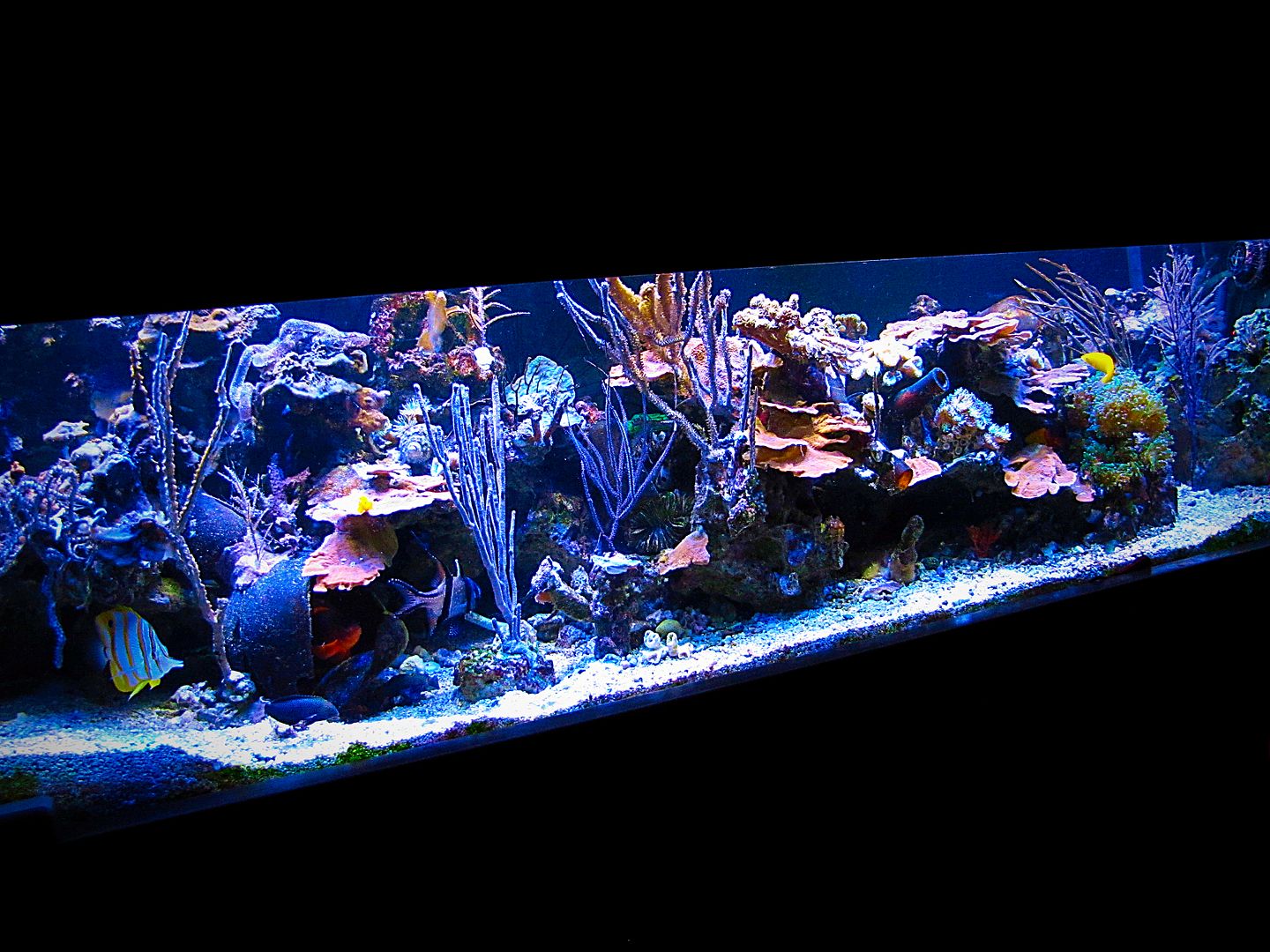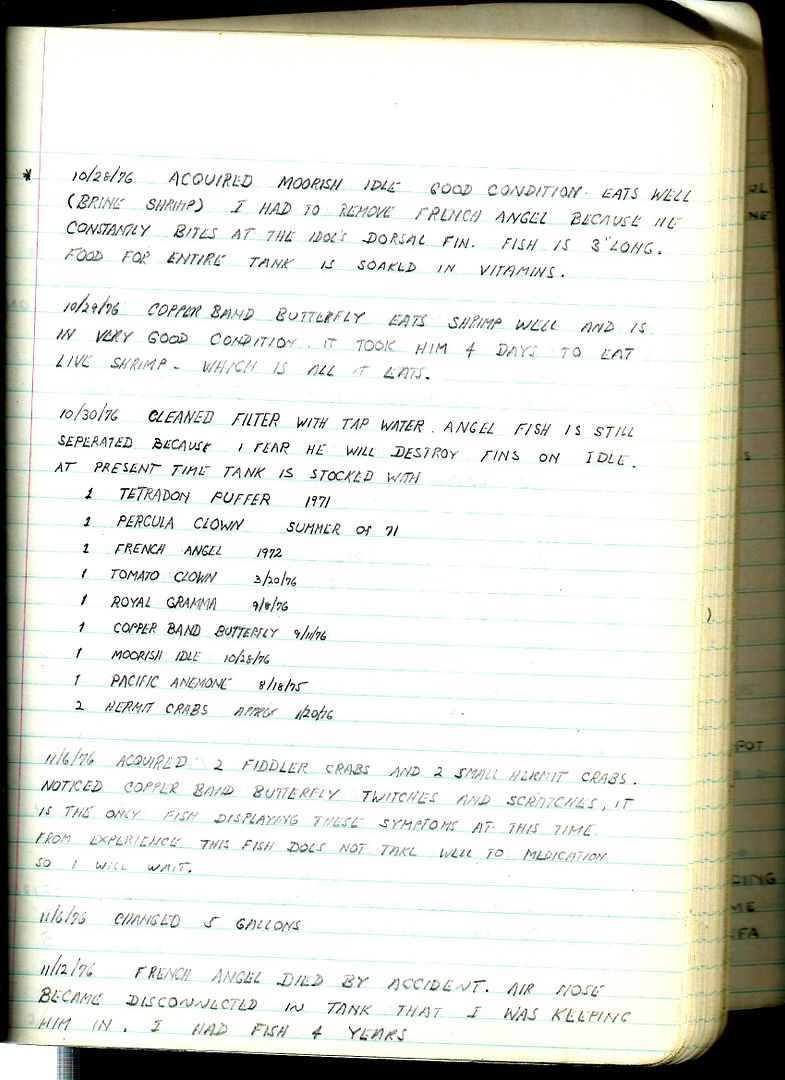-
Folks, if you've recently upgraded or renewed your annual club membership but it's still not active, please reach out to the BOD or a moderator. The PayPal system has a slight bug which it doesn't allow it to activate the account on it's own.
You are using an out of date browser. It may not display this or other websites correctly.
You should upgrade or use an alternative browser.
You should upgrade or use an alternative browser.
My reef reached 46 years old today
- Thread starter Paul B
- Start date
very nice looking tank man
thats awesome to see a tank that old id love to see a time lapse as it progressed. quick question i heard gorgonians were extremely hard to keep due to them being NPS whats your success story or tips for keeping them
He milks oysters and then uses it to feed the gorgonians.thats awesome to see a tank that old id love to see a time lapse as it progressed. quick question i heard gorgonians were extremely hard to keep due to them being NPS whats your success story or tips for keeping them
In all seriousness congratulations and thanks for coming over to the NJ board.
Paul B
NJRC Member
thats awesome to see a tank that old id love to see a time lapse as it progressed. quick question i heard gorgonians were extremely hard to keep due to them being NPS whats your success story or tips for keeping them
Here is the time lapse. It started like this in smaller glass in 1971.
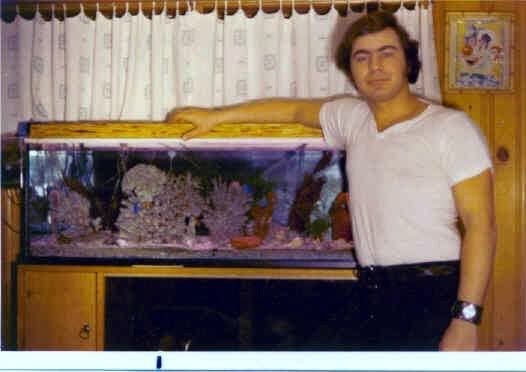
I transferred everything in it into a 100 gallon tank in about 1979 or 80. I was building my basement around it here. You can see the white bleached coral skeletons we used in those days for decoration
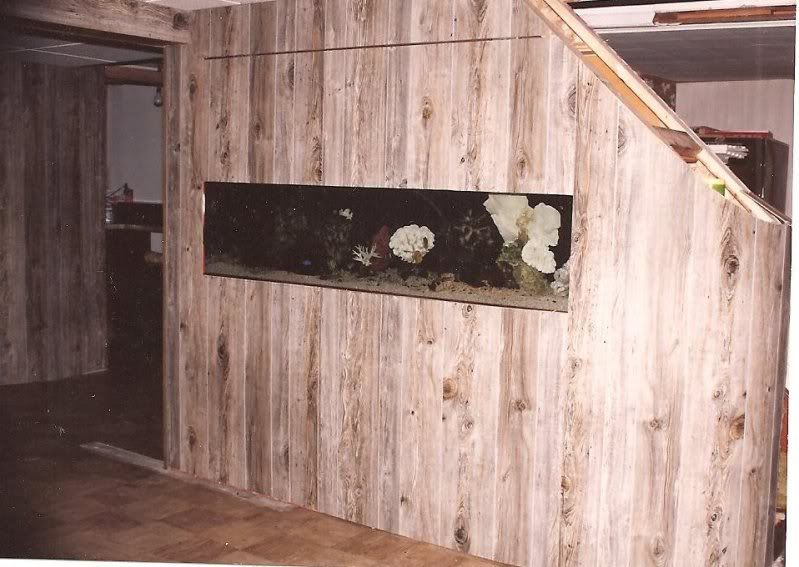
The tank went through a lot of modifications through the years but was never emptied and has never crashed.
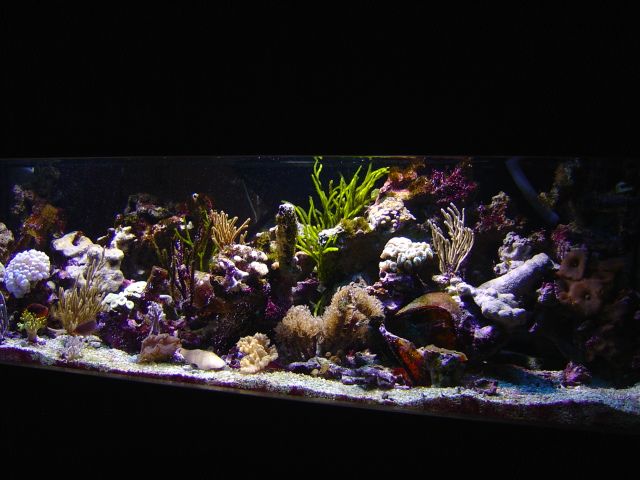
I love gorgonians and some of mine are very old. Their secret is to have a natural tank, not to sterile with some stuff floating around
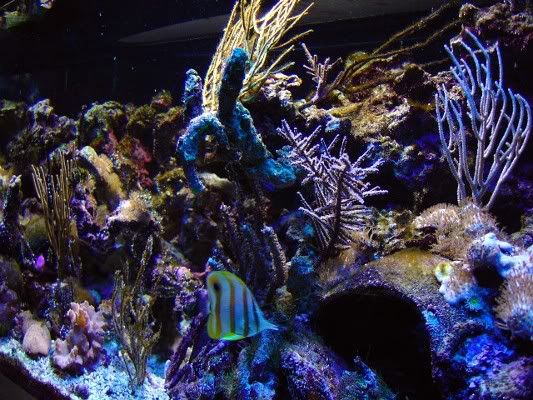
Do you also source your gorgonians yourself or do you buy them somewhere? I have a couple, always would like to add more if you know a good place...
Was there any coral or fish you especially regret adding?
Paul B
NJRC Member
Was there any coral or fish you especially regret adding?
A couple of fish, but I caught them and gave them away. One I remember was a dragon wrasse which re landscaped too much.
Creektree Thanks.
Gorgeous! Thank you so much for posting this! It is extremely inspirational to see. I'm very interested in going au natural, myself, lol. [emoji222] Aside from trying to recreate Mother Nature for the benefit of the sea creatures, I can't dump anything harmful down the drain, having a septic system and being located on the Delaware. Any tips in that department for we self-confessed amateurs?
Sent from my shoe phone using Tapatalk while in The Cone of Silence
Sent from my shoe phone using Tapatalk while in The Cone of Silence
Paul B
NJRC Member
The only thing I dump is old salt water and not very much of that. I don't dose anything except calcium and baking soda, I use no reactors or controllers, I never need to use any medications because my fish are immune, the only food is from the sea, nothing dry, processed or freeze dried. I use live blackworms, clams, Mysis and some LRS food. I don't really use test kits, but I do bring water to a LFS a few times a year to test (for free). I have no need for a quarantine or hospital tank and my fish have never been sick, not in over 35 years. All of my paired fish are constantly spawning including mandarins, blue stripe pipefish, fireclowns, ruby red dragonettes, watchman gobies, bangai cardinals, yellow wrasses and clown gobies.
The secret is live bacteria in their food and the constant presence of parasites.
The secret is live bacteria in their food and the constant presence of parasites.
Last edited:
Paul B
NJRC Member
Fish keeping was much more fun in the 70s because virtually nothing was known about salt water fish. There were no "experts" or even self proclaimed "experts". People couldn't even pretend to be "experts" because no one had a salt tank. I started mine about the same week salt water fish became available in New York and only one store in Manhattan had them. Blue devils and dominoes' were your choice. That's it.
But as time went by more fish became available but they were a challenge because we didn't know what to feed or anything else and there was no one to ask. I didn't know anyone with salt water fish for maybe 10 years.
Stores and wholesalers called me to administer to their fish. One was a large green moray eel with a big tumor on it's lip. That is one fish that is impossible to hold but I managed to remove the tumor and not get bit. The eel survived.
I had my pick of fish from wholesalers because I helped them. I designed and built a large seahorse feeder for their wholesale tank so the seahorses didn't starve before they were sold. I later patented the thing and sold 4,000 of them. The Breeders Registry › A New Feeding Strategy for Hippocampus sp., and other fishes
I no longer manufacture them.
Going to an aquarium store was always an adventure (we didn't call them LFSs) whenever a new fish appeared, I bought it. I was diving a lot then and tried to plan my trips to a place where that fish was from so I could learn about it in it's neighborhood. I learned more about Moorish Idols by spending a few hours with them underwater than all the articles written about them, which are mostly wrong.
Over the years I read all about parasites, bacteria, feeding, quarantine etc. and being I started before all of those articles, I developed my own methods which, with a few modifications, I still use. I realized most of that information was either partially wrong or totally wrong. I have always gotten flack from many of my methods but that flack was almost always from people or organizations who are now out of the hobby or business. It takes many years to fully understand the procedures of how to successfully run a tank and I feel the internet actually makes it harder because now there is unlimited information, most of which is IMO, wrong.
I made every mistake possible and even invented some. Now I know hundreds of things not to do.
This was my very early diving days with my, still closest friend Richie who recently moved to a home on the water in Key Largo.
This looks like fresh water and I think it is Lake George. We were diving for muskets that were supposed to be there from the Revolutionary war. We didn't find any and I dislike diving in fresh water.

This is us more recently picking out some "modern" dive equipment in the Keys. I am the better looking one on the right in both pictures.
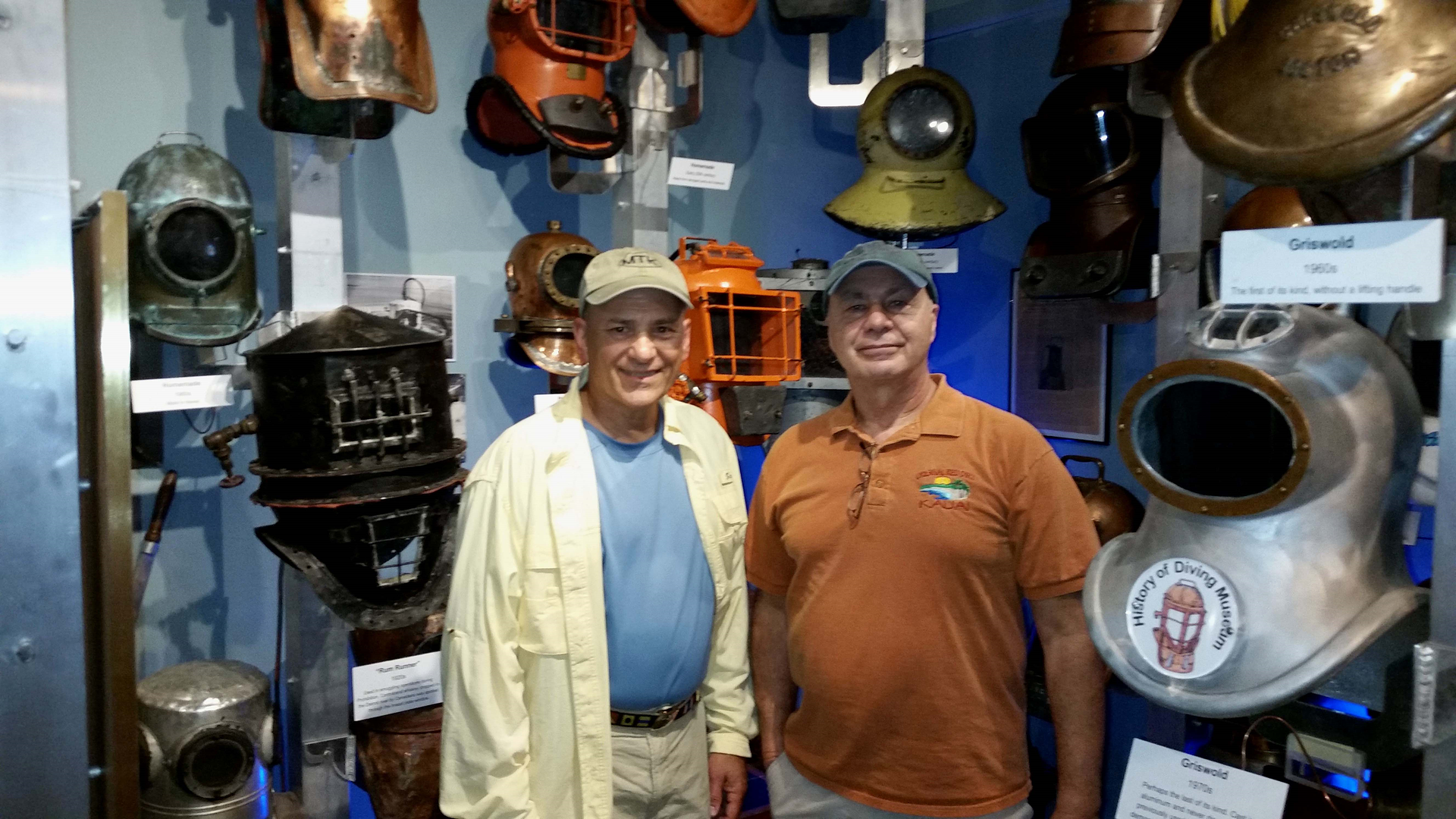
But as time went by more fish became available but they were a challenge because we didn't know what to feed or anything else and there was no one to ask. I didn't know anyone with salt water fish for maybe 10 years.
Stores and wholesalers called me to administer to their fish. One was a large green moray eel with a big tumor on it's lip. That is one fish that is impossible to hold but I managed to remove the tumor and not get bit. The eel survived.
I had my pick of fish from wholesalers because I helped them. I designed and built a large seahorse feeder for their wholesale tank so the seahorses didn't starve before they were sold. I later patented the thing and sold 4,000 of them. The Breeders Registry › A New Feeding Strategy for Hippocampus sp., and other fishes
I no longer manufacture them.
Going to an aquarium store was always an adventure (we didn't call them LFSs) whenever a new fish appeared, I bought it. I was diving a lot then and tried to plan my trips to a place where that fish was from so I could learn about it in it's neighborhood. I learned more about Moorish Idols by spending a few hours with them underwater than all the articles written about them, which are mostly wrong.
Over the years I read all about parasites, bacteria, feeding, quarantine etc. and being I started before all of those articles, I developed my own methods which, with a few modifications, I still use. I realized most of that information was either partially wrong or totally wrong. I have always gotten flack from many of my methods but that flack was almost always from people or organizations who are now out of the hobby or business. It takes many years to fully understand the procedures of how to successfully run a tank and I feel the internet actually makes it harder because now there is unlimited information, most of which is IMO, wrong.
I made every mistake possible and even invented some. Now I know hundreds of things not to do.
This was my very early diving days with my, still closest friend Richie who recently moved to a home on the water in Key Largo.
This looks like fresh water and I think it is Lake George. We were diving for muskets that were supposed to be there from the Revolutionary war. We didn't find any and I dislike diving in fresh water.

This is us more recently picking out some "modern" dive equipment in the Keys. I am the better looking one on the right in both pictures.

Fascinating! Yes, I remember as a kid wanting to take home some live seahorses and star fish which were sold at a local eatery/bait and tackle/gift shop at Barnegat Light. Anyone else remember those days? Family friends owned the old house that had served as the original Coast Guard building there. So, we spent part of our summers there (including a doozie of a hurricane). We used to walk to the "cafe" for a bite to eat. Fortunately for those little sea horses, my mother wouldn't spring for them. So, I was stuck with a hermit crab, perpetually in need of a bigger shell, a school of goldfish, and an occasional turtle or frog fresh caught with my bare hands in the lake we lived on.
I would have to agree with you that, generally, freshwater diving is not as exciting from a visual perspective than saltwater (sans Alligators) and it yields more lost sunglasses buried in muck than Spanish doubloons. However, on one occasion, I did manage to fish out a small cannonball from the Delaware. Unfortunately, I threw it back in before I realized what it was. It was one of those painful slo mo moments I continue to regret to this day.
You are correct that there are many myths and misconceptions regarding the animal kingdom due to an evergrowing lack of connection to the earth, much of it perpetuated online. I have had many a debate with well-respected MAs and PhD's, whose experience is largely contained to a laboratory setting, over various topics, including the insistance that all Heron species migrate for the winter. Yet, I hear their calls and see the birds parked outside my window in the middle of January with a foot of snow on the ground and ice flows coasting by...but I digress...
It makes me want to scream out, "I love my Big-Eyed Squirrel Fish and my really cool Sea Cucumber!" despite many a cautionary (fish)tale. As someone who once owned a quite large Electric Catfish, I will confess... sometimes, ignorance is bliss.
Thank you, wise sage, for sharing your wisdom! [emoji228]
Sent from my shoe phone using Tapatalk while in The Cone of Silence
I would have to agree with you that, generally, freshwater diving is not as exciting from a visual perspective than saltwater (sans Alligators) and it yields more lost sunglasses buried in muck than Spanish doubloons. However, on one occasion, I did manage to fish out a small cannonball from the Delaware. Unfortunately, I threw it back in before I realized what it was. It was one of those painful slo mo moments I continue to regret to this day.
You are correct that there are many myths and misconceptions regarding the animal kingdom due to an evergrowing lack of connection to the earth, much of it perpetuated online. I have had many a debate with well-respected MAs and PhD's, whose experience is largely contained to a laboratory setting, over various topics, including the insistance that all Heron species migrate for the winter. Yet, I hear their calls and see the birds parked outside my window in the middle of January with a foot of snow on the ground and ice flows coasting by...but I digress...
It makes me want to scream out, "I love my Big-Eyed Squirrel Fish and my really cool Sea Cucumber!" despite many a cautionary (fish)tale. As someone who once owned a quite large Electric Catfish, I will confess... sometimes, ignorance is bliss.
Thank you, wise sage, for sharing your wisdom! [emoji228]
Sent from my shoe phone using Tapatalk while in The Cone of Silence
Paul B
NJRC Member
RiverSwami, what a nice post, thank you for responding. We looked many times for cannonballs with an underwater metal detector but only found clams, huge ones. There is an old Revolutionary War fort here in New York named Fort Totten that is at the end of the East River just as it passes Manhattan and is the start of the Long Island Sound. The first time we dove there we forgot about the enormous current because all of the 120 miles of the Sound have to go through there when the tide turns.
We use a "buddy Line" between us because the visability is measured in inches. We jumped off my boat and tried to get to the bottom only to find that the current was so strong we couldn't get down. We were "flying" just over the bottom which is covered in Oldsmobile size boulders, crashing into quite a few of them. Much of the time we were up side down and spinning uncontrollably. We couldn't go up or down. Finally we made it to the surface 150 yards from the boat. We yelled to our wives to come and get us.
That's how we found out we could only dive there for 15 minutes in between tides. We did bring up on subsequent dives 18 dozen of the biggest clams I have ever seen because it is to deep and turbulent to go clamming there.
That was under the Throggs Neck Bridge which you can barely make out behind us here in the upper right.
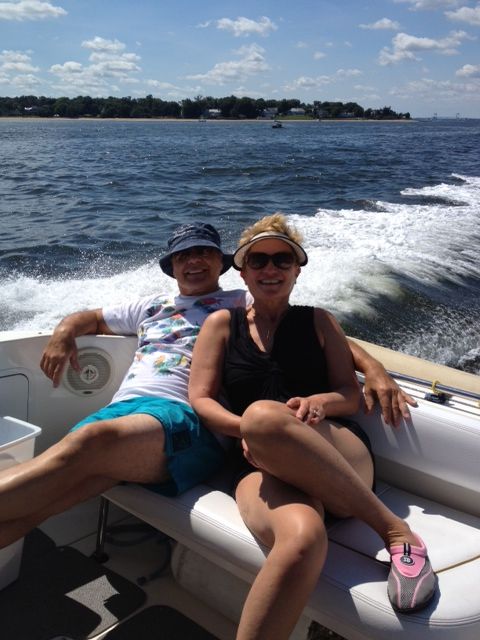
We use a "buddy Line" between us because the visability is measured in inches. We jumped off my boat and tried to get to the bottom only to find that the current was so strong we couldn't get down. We were "flying" just over the bottom which is covered in Oldsmobile size boulders, crashing into quite a few of them. Much of the time we were up side down and spinning uncontrollably. We couldn't go up or down. Finally we made it to the surface 150 yards from the boat. We yelled to our wives to come and get us.
That's how we found out we could only dive there for 15 minutes in between tides. We did bring up on subsequent dives 18 dozen of the biggest clams I have ever seen because it is to deep and turbulent to go clamming there.
That was under the Throggs Neck Bridge which you can barely make out behind us here in the upper right.



